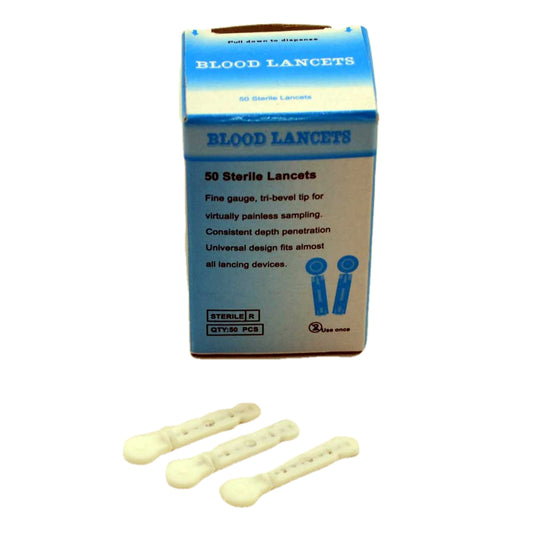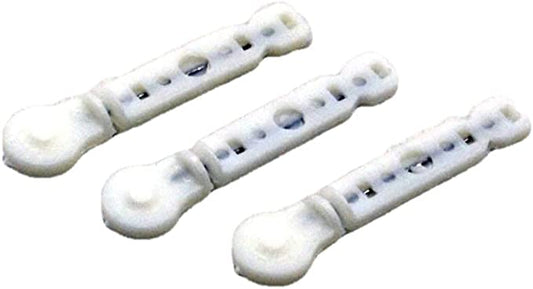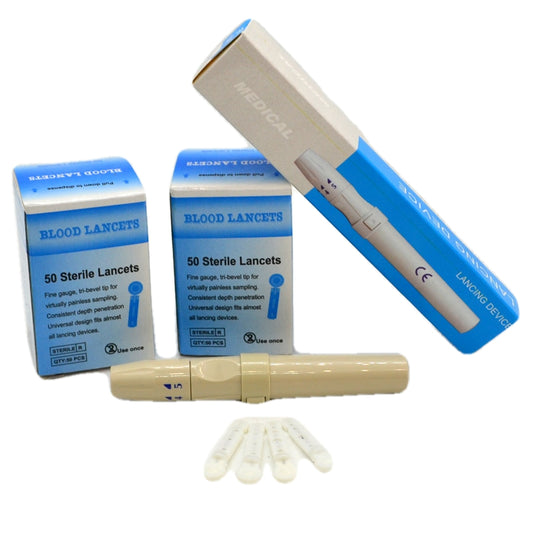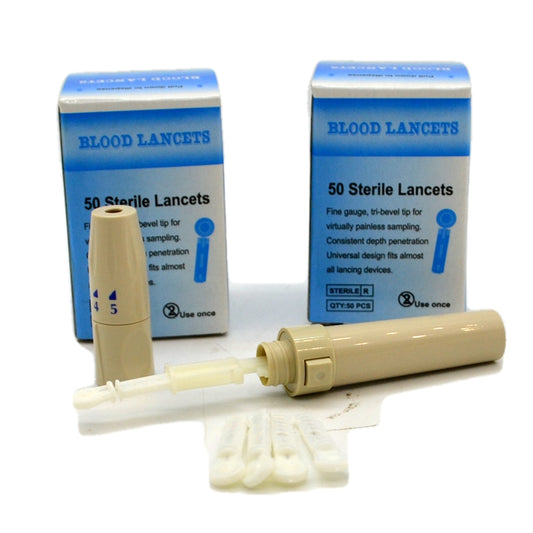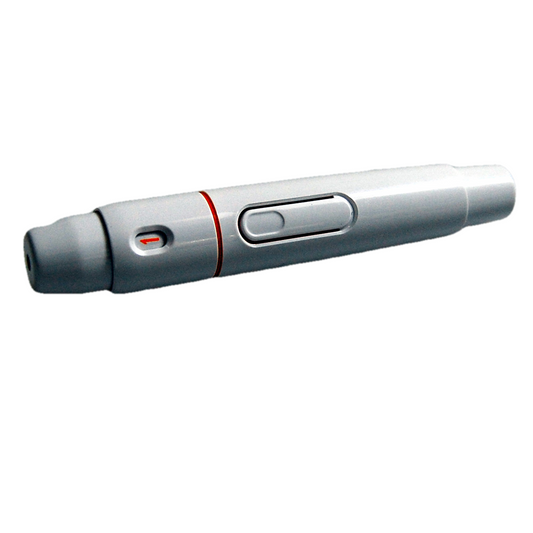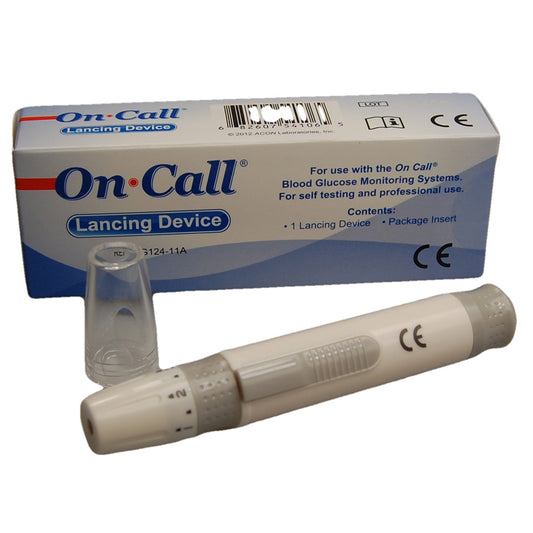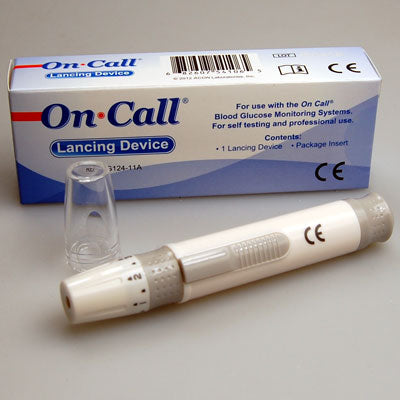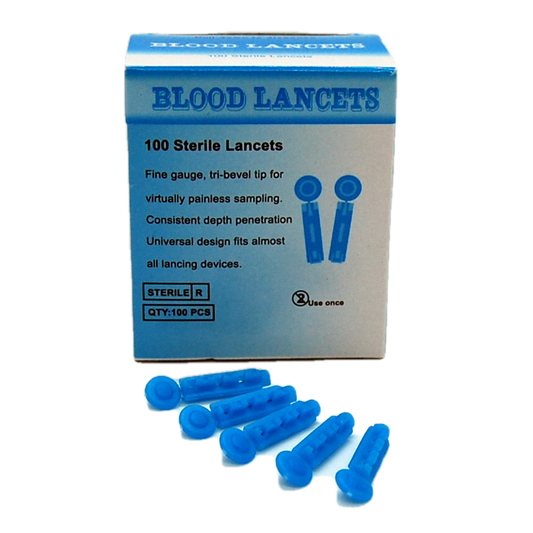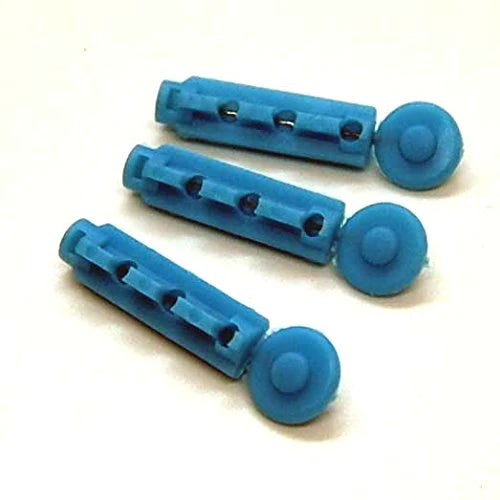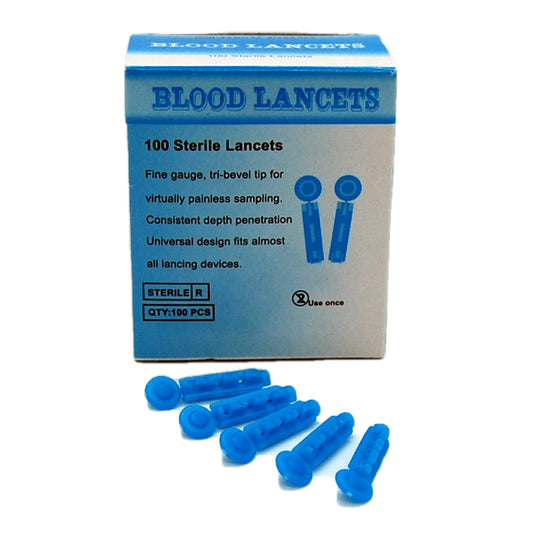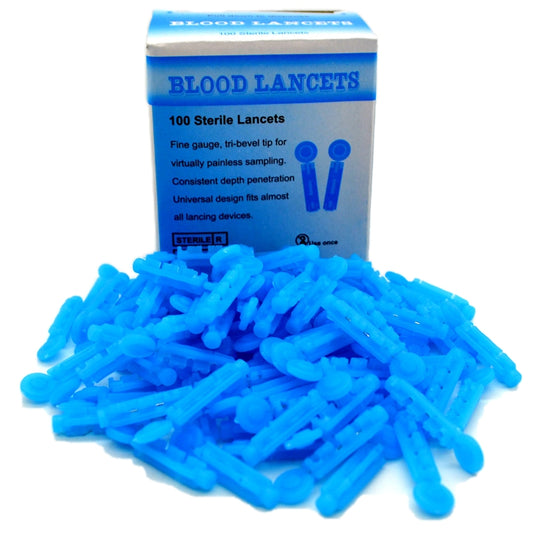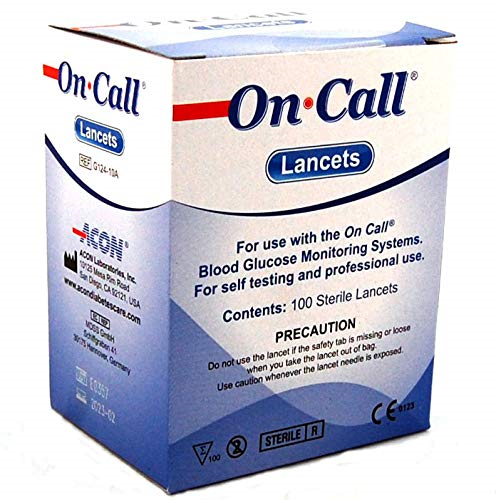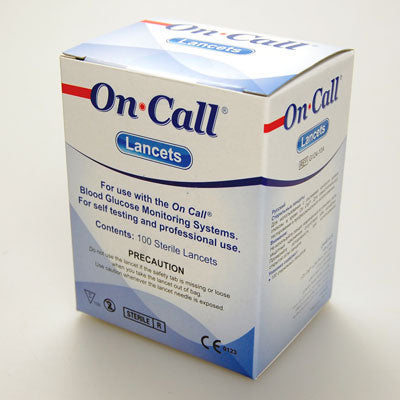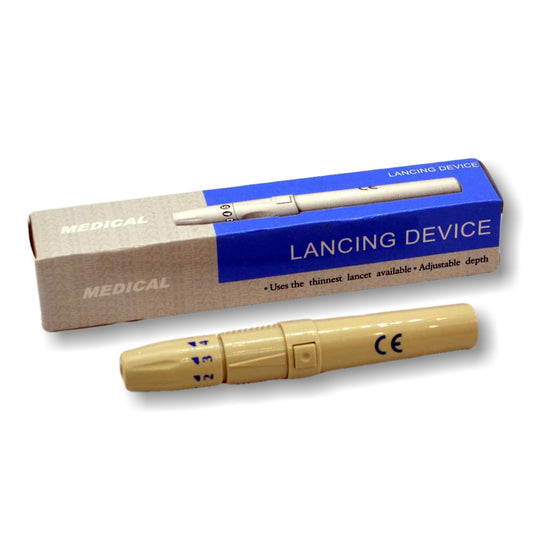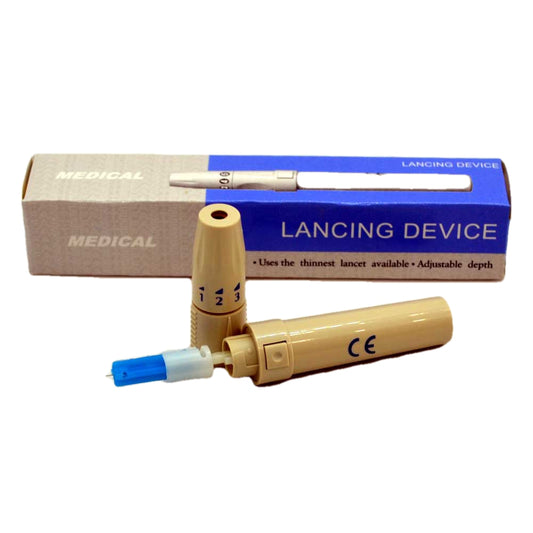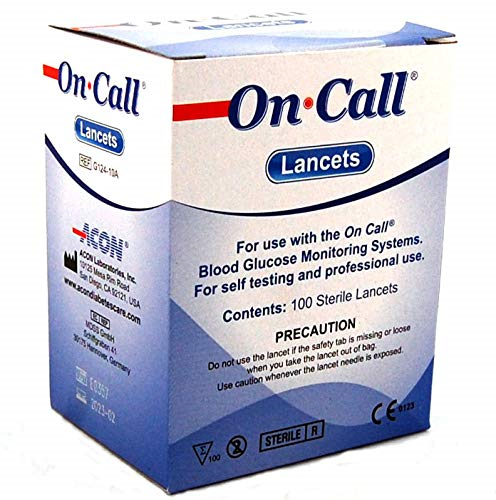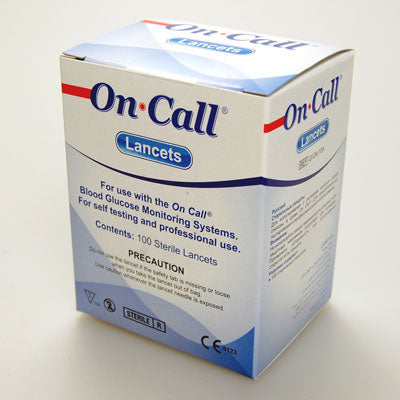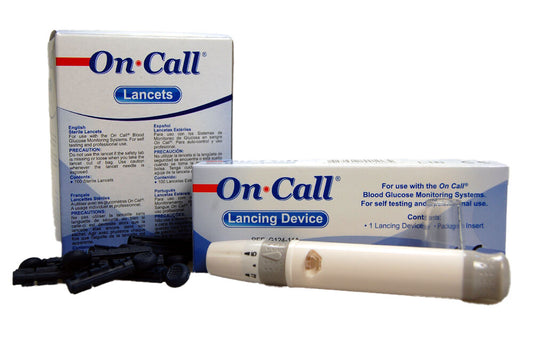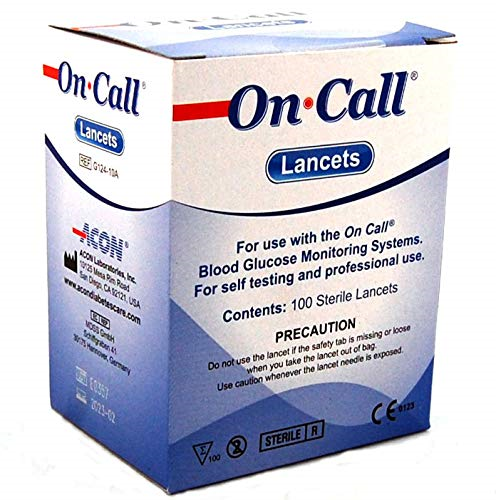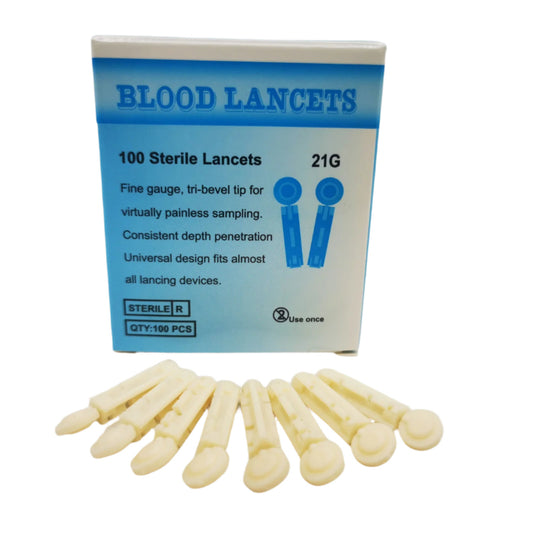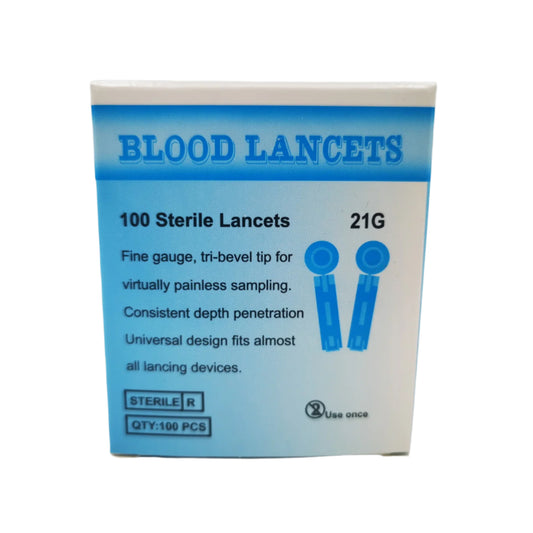Collection: Lancets and Lancing Devices
Lancets and auto lancing devices for sale.
-
50 Sterile Tip 30G Lancets (White Lancets)
No reviewsRegular price From £2.68 GBPRegular priceUnit price / per -
100 White 30G Sterile Tip lancets + Auto Lancing Device
No reviewsRegular price £9.75 GBPRegular priceUnit price / per -
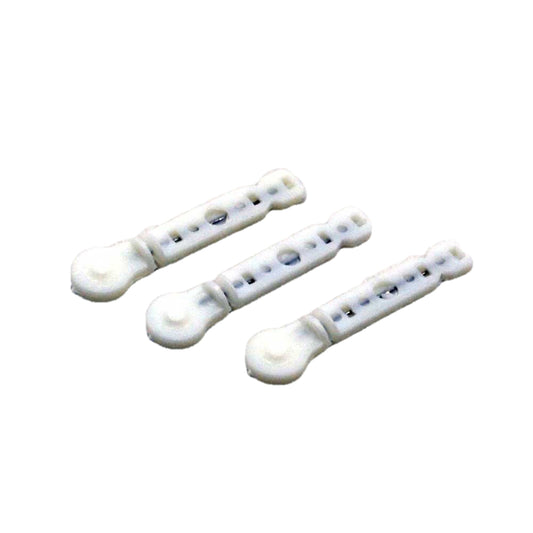
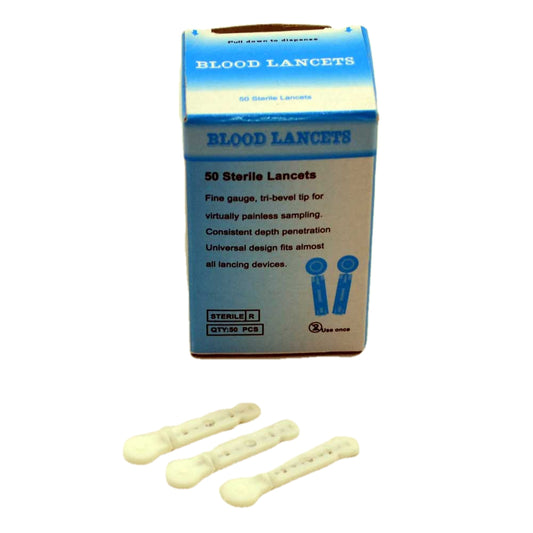
Sterile Tip 30G White lancets Compatible with Accu-Chek Compact Plus Glucose Monitor Softclix System
No reviewsRegular price From £3.99 GBPRegular priceUnit price / per -
EASYLIFE Auto Lancing Device
No reviewsRegular price £4.50 GBPRegular priceUnit price / per -
ON CALL Auto Lancing Device
No reviewsRegular price £4.96 GBPRegular priceUnit price / per -
50 Sterile Tip 28G Universal Lancets
3 reviewsRegular price From £2.68 GBPRegular priceUnit price / per -
100 Sterile Tip 28G Universal Lancets
No reviewsRegular price From £4.65 GBPRegular priceUnit price / per -
100 On Call Universal Lancets
1 reviewRegular price £4.96 GBPRegular priceUnit price / per -
eFAST Auto Lancing Device
No reviewsRegular price £4.50 GBPRegular priceUnit price / per -
Wholesale On Call Universal Lancets x 100 boxes
No reviewsRegular price £399.00 GBPRegular priceUnit price / per£496.00 GBPSale price £399.00 GBPSale -
Mission On Call Lancing Device + 100 On Call Universal Lancets
No reviewsRegular price £7.95 GBPRegular priceUnit price / per -
100 Sterile Tip 21G Universal Lancets
No reviewsRegular price From £4.65 GBPRegular priceUnit price / per
Lancets for blood testing and lancing devices for sale
A lancet is a small sharp device that is used for blood testing to obtain a very small blood sample, usually from a finger prick.
Single use lancets are commonly used to obtain a blood sample with diabetes blood glucose meters. Single use lancets can also be used to obtain finger prick blood sample for blood ketone meters, cholesterol meters, uric acid meters, haemoglobin meters and home blood tests.
Are there different types of lancets?
There are several different types of lancets available for sale. The lancets vary in gauge (how thick the lancet is) and how deep the lancet penetrates.
The main difference between the lancet brands is the plastic housing in which the lancet is contained. This difference is important if you are using a particular brand of lancing device, as you need to make sure the lancets are compatible with the lancing device.
You can use the lancets alone, but most people prefer to use a spring loaded auto lancing device to obtain a blood sample.
Types of lancets by gauge:
- 26G lancets (On Call brand)
- 28g lancets
- 30g lancets
The higher the gauge the smaller the lancets, so for the lancets we stock the 30g is the thinnest and the 26g is the thickest lancet.
Types of lancets by design
We only stock sterile tip safety lancets which means the needle or lance is covered and you have to remove the cover by either twisting or pulling it off prior to use.
- Pull-top: Uncover the needle by pulling off the protective covering from the top.
- Twist-off: Reveal the lancet by twisting off the top.
What type of lancet is a universal lancet?
A universal lancet has been designed to fit most lancing devices.
What size lancet should I use?
The lower the gauge of the lancet the thicker the needle that penetrates your skin. For most adults a 30 gauge lancet will be fine, and will obtain an adequate finger prick blood sample. If you have particularly thick skin or difficulty obtaining enough blood for the test then a 28 gauge lancet may be a better option, as the needle is slightly thicker and larger.
How many times can I use the lancets
Lancets for blood testing, should always be regarded as single use. The lancet is blunted by using it, and there is also a risk of spreading infection through reusing lancets.
What size lancet hurts the least?
The higher the lancet gauge the thinner the needle, and the less pain is likely to be felt. If the lancet cause insufficient blood droplet formation to complete the test, a thicker lancet is required.
An auto lancing devices allow the depth of penetration of the lancet to be adjusted, and this is often more significant in the how much pain is felt, than the thickness of the lancet.
The volume of blood you require may also affect how much the lancet hurts. For example blood testing for glucose and ketones only requires a small volume of blood, when compared to cholesterol or haemoglobin blood tests.
What is an auto lancing device?
An auto lancing device makes it much easier to use the lancet for blood testing, as the lancing device releases the lancet into your finger tip, rather than you having to stab yourself. Auto Lancing devices are used with single use lancets, making obtaining a blood sample quick and easy.
The lancing device holds the lancet firmly in place, and you administer the finger prick by simply pressing or clicking a button.
Do I need an auto lancing device?
You can use the lancets alone but most people prefer to use a lancing device with the lancets to obtain a blood sample.
How deep should a lancet go?
The depth of penetration the lancet should go depends on the size of the blood sample you require. The autolancing device has setting 1-5 with 1 being superficial and 5 being deepest. For most blood tests a depth of 1 or 2 may be sufficient.
Which finger is best for obtaining a blood sample with a lancet?
The best fingers for using the lancet on are the middle and the ring finger of your non dominant hand. ie so if you are right handed using your left middle or ring finger (3rd or fourth finger ) and if you are left handed use your middle or ring finger on the right hand if at all possible.
Avoid using your index fingers to obtain a blood sample with a lancet, as these are used for many tasks including typing and scrolling on mobile phones and computers.
Do you need a prescription to buy lancets in UK?
You do not need a prescription to buy lancets for blood testing, or lancing devices as they are an over the counter medical device in the UK.
We hope our guide on to lancets and lancing devices has equipped you with the confidence and knowledge to safely obtain a blood sample. If you have any further questions or need any assistance selecting the best lancet for your needs, please reach out to our expert customer support team, who will be happy to assist you with any enquiries regarding lancets and their use.
Most frequently asked questions about medical lancets
Collapsible content
What are lancets and how do you to use them?
A lancet is a small, sharp needle primarily used to prick the skin and draw blood, playing a crucial role in diabetes management by facilitating blood glucose monitoring.
Beyond diabetes care, lancets are also utilised for other medical purposes, such as collecting blood samples for various tests including home cholesterol tests, haemoglobin tests, uric acid tests and PSA tests. These devices are designed for single use.
Can you give me any tips on obtaining the finger prick blood sample?
Obtaining a good finger prick blood sample is crucial to getting accurate results with any home blood test. We have created a video for each product which shows a great demonstration of exactly how you should be using the lancets and test provided, and the prep needed to perfuse the fingers.
We have put together our top tips on performing a finger prick blood test to help you here
Can you use a lancet without an auto lancing device?
A lancet can be used alone or with a lancing device. Many people find it easier to obtain a finger prick blood sample if they use the lancet in a lancing device.
Most of our meters are supplied with starter packs of lancets and some with safety lancets. We suggest you continue to use the same lancets recommended by the manufacturer if possible. If you are struggling to get adequate samples move to a thicker lance, ie 21g is thicker than 28g or 30g (the thinnest)

